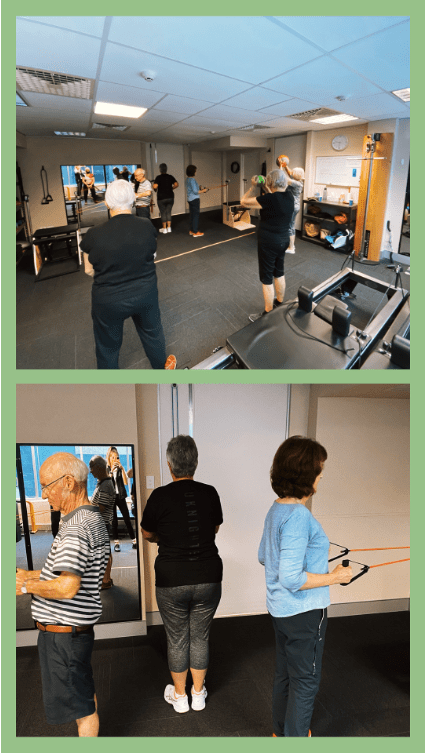Approximately one third of individuals over the age of 60 experience a fall in a given year. This can be attributed to the normal changes in both sensorimotor and neuromuscular systems that occur in healthy older populations. Fortunately, balance training can mitigate falls risk and the implementation of specific exercise programs is strongly encouraged for older Australians.
What is Balance Training?
Balance training involves challenging a person’s equilibrium through positioning or external perturbation. For balance training to be effective, it must reduce the base of support by the position of the feet, challenge the centre of gravity, and reduce the use of the upper limb during standing activities.
Types of Falls Prevention Training
More recently perturbation-based balance training has been assessed as a feasible method of balance training. This method aims to improve the response to postural disturbances through counter rotations and support movements. Shifting the focus in balance training to incorporate this task-specific approach has the potential to enhance falls reductions seen with traditional balance training. This can be implemented by your therapist providing external forces such as a purposeful push or pull.
As an adjunct to balance training, overarching involvement in physical activity reduces the risk of falling by 30-50%. To look more specifically at a training regime, the inclusion of both aerobic and resistance training with balance training also enhances balance outcomes. Resistance training improves these outcomes by addressing the neuromuscular degeneration which results in muscle weakness and changes to gait. When this is performed in a supervised manner, improvements are greater than those unsupervised; however, completion of resistance training in any environment shows greater improvement than no intervention. The strong support for resistance training in bone health in the older population further purports its inclusion in an exercise class format.
How much balance training is needed?
The timeframe in which balance training has been shown to have a positive effect varies in the literature. Present guidelines support 30-45 minutes of balance training completed 3 times per week.
It is important to recognise the impacts of discontinued training on performance outcomes. A de-training period of 6 weeks to 3 months has been shown to decline balance improvements. Thus, a continued commitment to training is been recommended to prevent deterioration and maintain improvements.
Strength & Balance Program at Peak Physio
At Peak Physio, we have curated a Strength and Balance class which runs several times per week. We offer a 45-minute class format with small participant numbers to ensure optimal guidance and supervision. The opportunity for social engagement is another critical element to this class, bringing community members together whilst challenging each other.
Initial assessments are encouraged whereby the participants history regarding falls, general health, medical history is ascertained. From here a plethora of objective outcome measures are taken with guidelines from the BOOMER: Balance Outcome Measure for Elder Rehabilitation. Assessment outcomes can be reassessed at regular intervals.
Please enquire about class times and the commencement of your fall prevention journey now!
References
- Sherrington, C. et al. Exercise to prevent falls in older adults: an updated meta-analysis and best practice recommendations. NSW Public Health Bulletin 22(4) 78-83.
- Thomas, E., et al. Physical activity programs for balance and fall prevention in elderly:A systematic review. Medicine (2019) 98:27.
- Lesinski, M., et al. Effects of Balance Training on Balance Performance in Healthy Older Adults: A Systematic Review and Meta-analysis. Sports Med 45, 1721–1738 (2015).
- Gerards, M., et al. (2017). Perturbation-based balance training for falls reduction among older adults: Current evidence and implications for clinical practice. Geriatrics & Gerontology International, 17(12), 2294-2303.
- Falls prevention in older adults. Assessment and management Volume 41, No.12, December 2012. 930-935.



